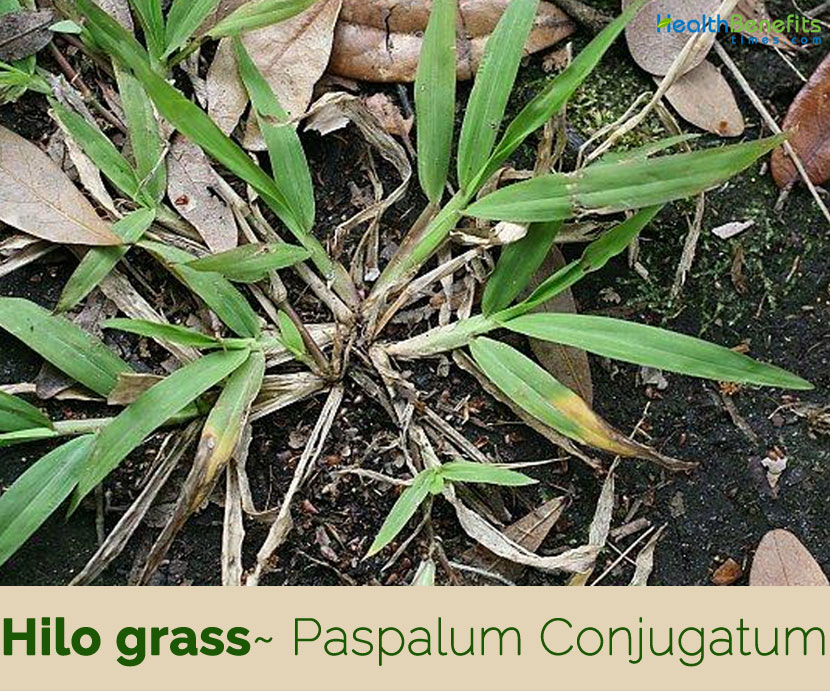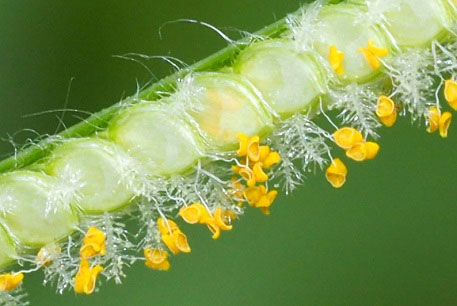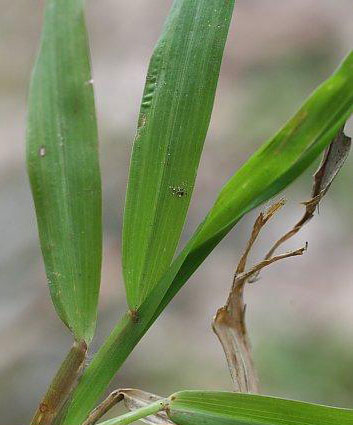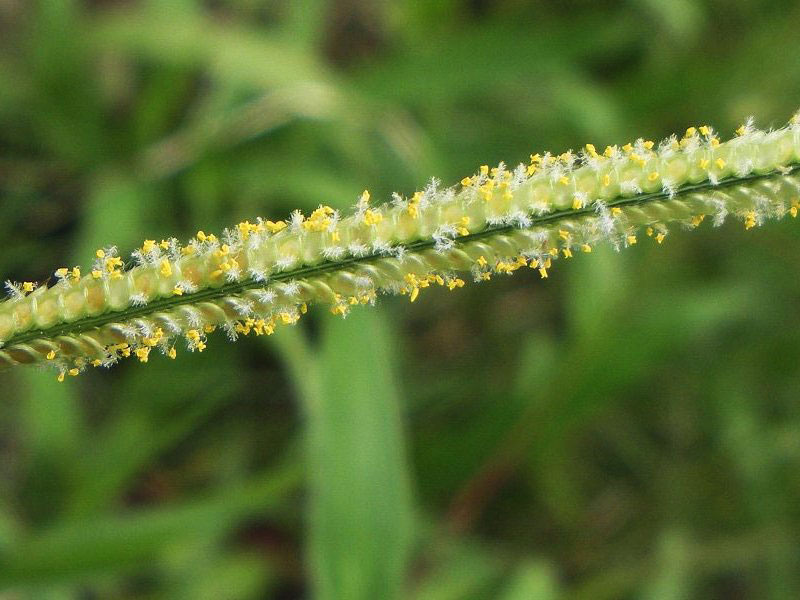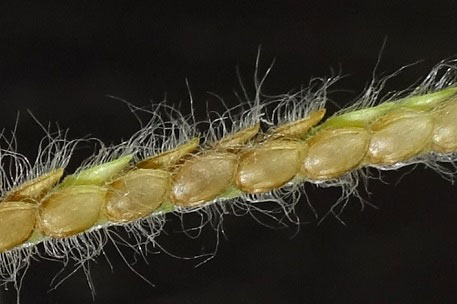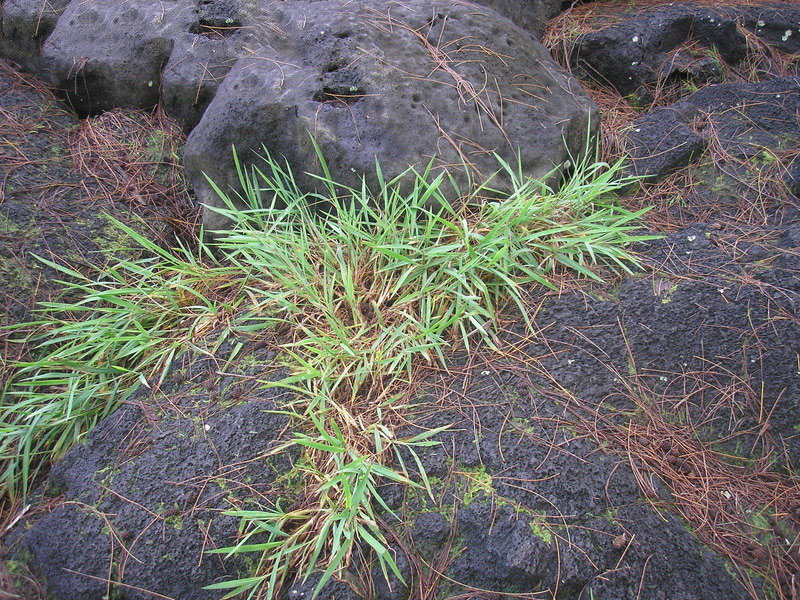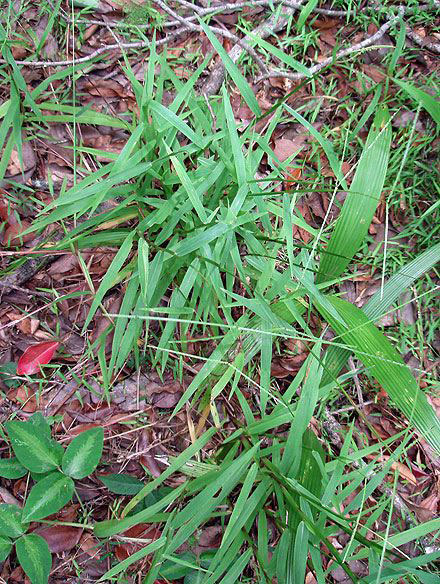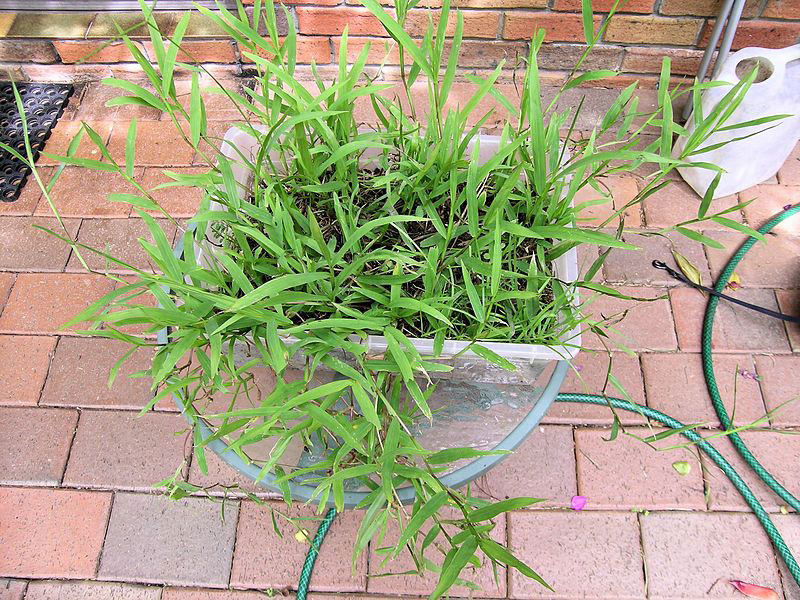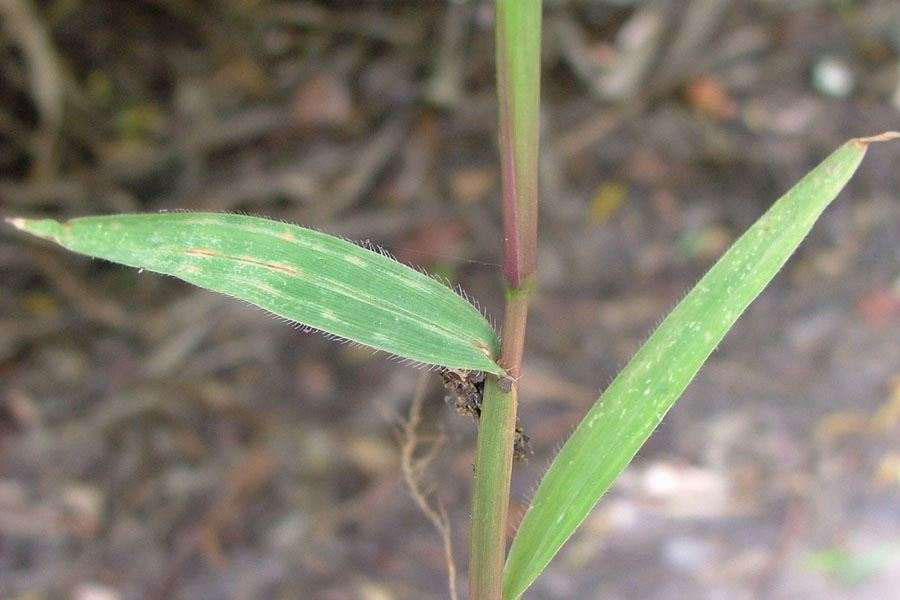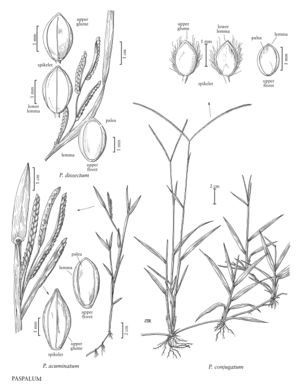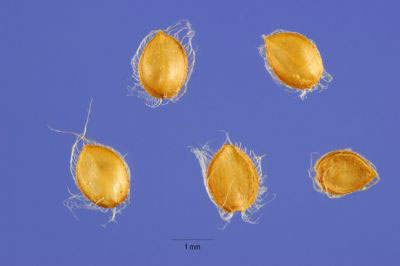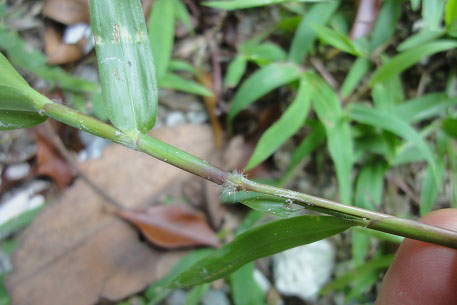Hilo Grass Facts
| Hilo Grass Quick Facts | |
|---|---|
| Name: | Hilo Grass |
| Scientific Name: | Paspalum Conjugatum |
| Origin | Tropical America, but now widely naturalized in northern and eastern Australia, tropical and northern Africa, tropical Asia |
| Shapes | 1.5 mm long and 1 mm wide, flattened with fimbriate margins |
| Health benefits | Good for fever, debility, stomach troubles, pulmonary afflictions, diarrhea, dysentery, headaches, wounds and cuts, contusions, sprains and dislocations |
| Name | Hilo grass |
|---|---|
| Scientific Name | Paspalum Conjugatum |
| Native | Tropical America, but is now found throughout the tropical regions of the world (i.e. it is pan-tropical). Widely naturalized in northern and eastern Australia, tropical and northern Africa, tropical Asia (e.g. Cambodia, China, Brunei, Malaysia, Singapore, Taiwan, Indonesia, the Philippines, Thailand, Vietnam and Papua New Guinea), |
| Common Names | Buffalo grass, carabao grass, hilo grass, sour grass, sour paspalum, T grass, yellow grass, cow grass, Johnston River grass, paspalum grass, Thurston grass, ti grass |
| Name in Other Languages | Australia: Cow grass Bahamas: Two-spiked paspalum Brazil: Capim-de-marreca, capim-forquilla, capim-gordo, capim-noxo, grama comum, grama-forquilla, grama-tê Cebuano: Sacate Chamorro: Lagasa Chinese: Liang er cao (两耳草), Cha zi cao, Shuang sui que bai Chuukese: Fätilimwän, fatil, fatin yung, fetil, fetin umund, fetin umuno, fetin wumwune Cuba: Cañamazo hembra Danish: Hirse Dominican Republic: Cañamazo English: Hilo grass, T grass, buffalo grass, carabao grass, sour grass, sour paspalum, ti grass, yellow grass, Johnston grass, water grass, Sour Crown Grass, Johnston River Grass Fiji: Thurston grass, ti grass, yellow grass Filipino: Kauad-kauaran French: Herbe créole, herbe de tauère, herbe sure Germany: Fransenblättrige, Futterhirse, Dallisgras Haiti: Z’herbe sure Hawaiian: Mau‘u Hilo India: Banhaptia Indonesia: Rumput pait, jampang pahit, paitan, klamaran Italian: Paspalo dilatato. Jamaica: Jamaican sour grass Japanese: Ogasawara suzume no hie (オガサワラスズメノヒエ) Shima suzume no hie Kosraean: Meshashe, muhsrasre Kwara‘ae: Karasi Malaysia: Rumput kerbau, rumput ala negri Mangarevan: Kirimiro Manobo: Bantotan Maori (Cook Islands): Mauku kātini, mauku taravao Marshallese: Ujoij Japan: Ogasawara suzume no hie Mexico: Pata de conejo trensila Niuean: Mosie vailima, mosie vaolima, motie vailima, vailima Nukuoro: Heri Palauan: Udel ra ngebel Philippines: Bantotan, kanat-kanat, kauad-kauaran, kulape, sacate Pohnpeian: Fahtil-rawfut, reh-n-wai, rehnwahi, ren wai Portugueses: Capim-azedo, Capim de marreco, Capim-forquilha, Capim-gordo, Grama-papuã, Capim-marreca, Capim-roxo, Capim-tó, Capirapó, Grama-doce, Grama-forquilha, grama-azeda, grama-comum, Capim te, catuaba Puerto Rico: Horquetilla blanca Rotuman: Mous sau rangi Samoan: Vailima, vailima matafao, vao lima Spanish: Cañamazo amargo, cambute, caraconga, grama, grama de antena, horquetilla, pasta horqueta, pasto amargo, pasto de burro, pata de conejo, torourco, trensilla, hierba agria, pasto horquilla, tarurco Suriname: Buta grasse Tagalog: Kulape Taiwan: Mu-yin-chywe-bai Thailand: Ya-heb, ya-nomnon Tokelauan: Vaolima Tongan: Vailima Ulithian: Fathil Venezuela: Paja mala Vietnam: Co san cap Yapese: Ataralow, ataraow, fugur parap, Kar |
| Plant Growth Habit | Tropical to subtropical, vigorous, creeping perennial grass with culms |
| Growing Climates | Open places in forests, forest margins, moist grasslands and shrub lands, along riverbanks, pastures, along stream banks and ditches, at roadsides and in disturbed areas, seasonally flooded places, marshes, paddy fields and draining plantations, orchards, vineyards, irrigation channels, parks, lawns, waste areas |
| Soil | Wide range of soils including acidic, low-nutrient soils, and in wet as well as drier soil |
| Plant Size | Up to 1 m tall |
| Culms | Branching and slightly compressed dorsoventrally, they are usually reddish to purplish in color |
| Leaf | Leaf blades are 11-18 cm long and 1-1.2 cm wide, mainly glabrous except for a few hairs along the margins, main vein prominent on abaxial surface |
| Flower | Inflorescence usually composed of two secund spikes, each about 60-100 mm long. Glands at base of raceme are well-developed, very hairy. Spikelets are solitary, pedicellate 0.3-0.5 mm long and in 2 rows below the rachis, markedly ciliate on the margins, cream to creamy-green, flat, about 1 mm long |
| Fruit Shape & Size | Individual fruits about 1.5 mm long and 1 mm wide, flattened with fimbriate margins. Embryo is small. |
| Seed | Seeds are 1 mm long and 0.8 mm wide |
| Propagation | By Stolons |
| Plant Parts Used | Fresh roots |
Plant Description
Hilo grass is a tropical to subtropical, vigorous, creeping perennial grass with erect or ascending culms that normally grows up to 20–100 cm tall. The culms are branching and slightly compressed dorso-ventrally, they are usually reddish to purplish in color. The plant is found growing in open places in forests, forest margins, moist grasslands and shrub lands, along riverbanks, pastures, along stream banks and ditches, at roadsides and in disturbed areas, seasonally flooded places, marshes, paddy fields and draining plantations, orchards, vineyards, irrigation channels, parks, lawns and waste areas. The plant is found growing in wide range of soils including acidic, low-nutrient soils, and in wet as well as drier soil. Nodes glabrous with remains of old leaf sheaths. Lateral branches are sparsely branched. Stems are glabrous and rooting at the nodes.
Leaves
Leaf blades are 11-18 cm long and 1-1.2 cm wide, mainly glabrous except for a few hairs along the margins, main vein prominent on abaxial surface. The leaf sheaths are strongly flattened, usually 30 to 50 mm (1.2 to 2.0 in) long, hairy around the nodes and at the junction with the blade. Ligule is truncate, 1 mm long. The leaves are smooth, around 8 to 20 cm (3.1 to 7.9 in) in length, and 5 to 12 mm (0.20 to 0.47 in) in width. They are linear to lance-like in shape, tapering to a point.
Flowers
Inflorescence usually composed of two secund spikes, each about 60-100 mm long. Glands at base of raceme are well-developed, very hairy. Spikelets are solitary, pedicellate 0.3-0.5 mm long and in 2 rows below the rachis, markedly ciliate on the margins, cream to creamy-green, flat, about 1 mm long. Rachis is prominently winged. Lower glume is absent. Upper glume with a few fine hairs along the upper margin, obscurely 3 veined. Lemna is glabours. Anthers yellow. Stigmas are white and plumose.
Fruit
Fruits arranged in two rows below the inflorescence branches. Individual fruits about 1.5 mm long and 1 mm wide, flattened with fimbriate margins. Embryo is small. Seeds are 1 mm long and 0.8 mm wide. Testa surface is smooth and glossy.
Traditional uses and benefits of Hilo Grass
- The Iban of Borneo use leaf decoctions in the treatment of wounds and sores and in the Sepik area of Papua New Guinea crushed spikelets are used for the same purpose.
- Decoction of the leaves, or the crushed spikelets, is used in the treatment of wounds and sores.
- Leaves are also used in the treatment of fever, debility, stomach troubles and pulmonary afflictions.
- Young leaves are pounded and then applied as paste onto wounds and cuts.
- An infusion of the plant is used as a remedy for headaches.
- It is used as anti-venom, a decoction of the whole plant, combined with the oil of Lebrunia bushaie, is rubbed on the bite.
- Roots are used in the treatment of diarrhea and dysentery.
- Decoction of fresh roots is taken internally for diarrhea.
- In Africa, leaves used for fever, debility, stomach troubles and pulmonary afflictions; roots used for diarrhea and dysentery
- In Gabon, it is pounded with the leaf of Desmodium salicifolium and applied as compress for contusions, sprains and dislocations.
- In Congo, the leaves are used with Macaranga sp and Renealmia sp. in a vapor bath for fever.
- In Cameroon, decoction of leaves, softened in hot ashes and ground in water, used for dysentery.
- Leaf infusions used for fever in Trinidad.
- Leaves used for wound healing in West Papua.
- Infusion of the plant used for headaches in Ecuadorian Amazon.
- In Zaire, as antivenom, decoction of whole plant is rubbed on the bite with the oil of Lebrunia bushaie.
Other Facts
- Paspalum conjugatum is used as forage or in cut-and-carry systems.
- It is occasionally used as a lawn grass.
- In Indonesia, P. conjugatum and other natural weeds have been used as cover crops under coffee trees to control soil erosion.
- In Africa, grass provides good grazing for cattle and horses, taken before seed-set.
- Cats and dogs said to eat the leaf as purgative.
- conjugatum is used as forage for grazing or in cut-and-carry systems, and is rated as very important as a natural pasture grass in coconut plantations.
- It is occasionally used as a lawn grass and is also regarded as an important weed in rice and plantation crops.
Precautions
- Wet fruits may become very irritating as they easily stick to one’s legs and clothing.
- It is stated that only the young stage of the grass is suitable for grazing since the fruits tend to stick in the throats of livestock and choke them.
Prevention and Control
Due to the variable regulations around (de)registration of pesticides, your national list of registered pesticides or relevant authority should be consulted to determine which products are legally allowed for use in your country when considering chemical control. Pesticides should always be used in a lawful manner, consistent with the product’s label.
Paspalum conjugatum is suppressed by nitrogen application in pastures but is not suppressed by slashing or sheep grazing. In sufficiently humid situations, legume cover crops are the main means of control in rubber, oil palm, etc. Some legumes may have an allelo-pathic effect on the weed as well as shading it. Increasing soil temperature by solarization has given good suppression for up to 3 months.
Chemical Control
Herbicides such as MSMA, DSMA, dicamba, bromacil, paraquat, metsulfuron, glyphosate and amitrole have been used to control P. conjugatum when growing as a weed in crops and pastures
References:
http://www.hear.org/pier/species/paspalum_conjugatum.htm
https://www.itis.gov/servlet/SingleRpt/SingleRpt?search_topic=TSN&search_value=41015#null
https://npgsweb.ars-grin.gov/gringlobal/taxon/taxonomydetail?id=26835
https://www.cabi.org/isc/datasheet/38951
https://keyserver.lucidcentral.org/weeds/data/media/Html/paspalum_conjugatum.htm
https://plants.usda.gov/core/profile?symbol=PACO14
https://en.wikipedia.org/wiki/Paspalum_conjugatum
http://wgb.cimmyt.org/gringlobal/taxonomydetail.aspx?id=26835
http://www.theplantlist.org/tpl/record/kew-431408
https://indiabiodiversity.org/species/show/243261
https://keys.lucidcentral.org/keys/v3/AusGrass/key/AusGrass/Media/Html/PASPALUM/PASCONJ.HTML
http://tropical.theferns.info/viewtropical.php?id=Paspalum+conjugatum
https://gd.eppo.int/taxon/PASCO
http://www.stuartxchange.org/Laua-laua.html
https://uses.plantnet-project.org/en/Paspalum_conjugatum_(PROSEA)


